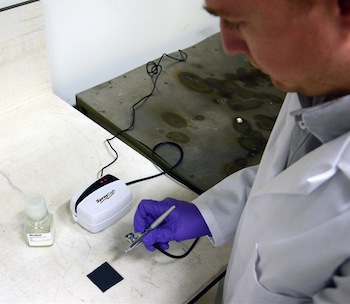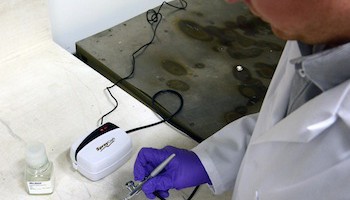
Researcher Jonathan Major demonstrates a simple method of applying magnesium chloride to a thin film solar cell. By replacing more expensive and toxic cadmium chloride, magnesium chloride could make solar cell manufacture less expensive and more environmentally friendly. (Photo credit: University of Liverpool)
A new processing technique could enable cheaper, cleaner thin-film solar cells, according to a new study.
Cadmium telluride is often touted as a replacement for silicon in solar cells; because it absorbs light so much better than silicon it could lead to thinner and more efficient cells. However, part of the manufacturing process involves cadmium chloride, an expensive and highly toxic salt.
The new study demonstrates that cadmium chloride can be replaced with magnesium chloride – which is easily extracted from seawater and is safe enough to eat – without compromising the efficiency of the solar cell. This could lead to cheaper, greener manufacturing.
Original research paper published in the journal Nature on June 25, 2014.
Names and affiliations of selected authors


